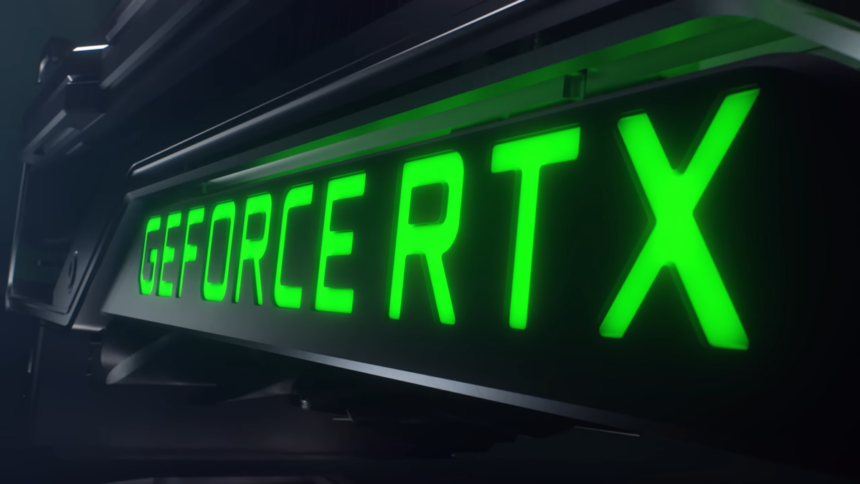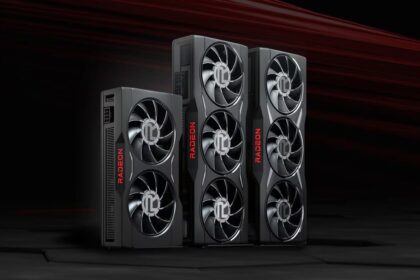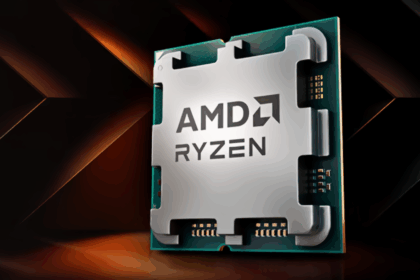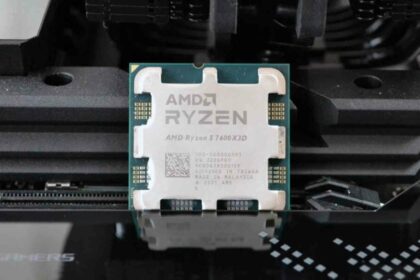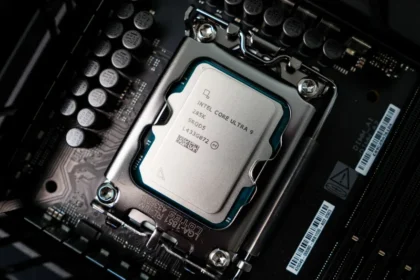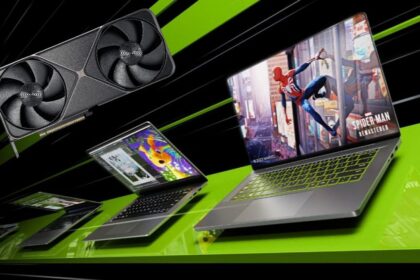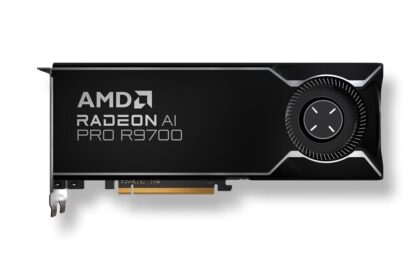Ray tracing isn’t a new concept—it’s been used for decades to create complex 3D imagery. However, its modern application, accessible to millions of gamers, deserves attention. This technology enhances lighting, reflections, and shadows with a level of realism far beyond the rasterization techniques that have dominated gaming for years.
When it comes to ray tracing in gaming, much of the credit goes to NVIDIA. The company pioneered the hardware-based implementation of ray tracing with the launch of its GeForce RTX series. Starting with the RTX 20 GPUs, NVIDIA enabled gamers to experience this advanced rendering technology directly, setting a new standard for visual fidelity in video games.
What is Ray Tracing?
Ray tracing is a simulation technique used to calculate the behavior of elements like particles, light rays, and even sound waves. While the concept dates back to the 1980s, it was initially applied to non-real-time rendering. One notable early exception was a 1987 demo on the Amiga console, showcasing a juggler with glass balls that reflected his image—an impressive feat for its time.
Beyond gaming, ray tracing has been extensively used in computer graphics, especially in the film industry. In movies, however, the technique is applied during post-production, producing pre-rendered visuals. This contrasts with gaming, where ray tracing is executed in real-time, requiring significantly more computational power.
Even today, ray tracing remains hardware-intensive. Its modern application in gaming became feasible only with the introduction of NVIDIA’s GeForce RTX video cards, which brought the necessary processing power to handle this advanced rendering technique.
Ray Tracing Processing with NVIDIA GPUs
The implementation of ray tracing relies on a seamless combination of software and hardware working together. On the software side, ray tracing is integrated into applications like games or animations, enabling developers to create stunningly realistic visuals.
On the hardware side, specialized components accelerate the complex calculations required, enhancing both the creation process for developers and the real-time rendering of the final visuals experienced by users. This synergy is what makes modern ray tracing both effective and accessible.
RT and Tensor Cores
The standout feature of GeForce RTX graphics cards is their RT cores, also known as RTX cores, which handle the demanding ray tracing calculations in games and applications. Introduced with the RTX 20 series in 2019, these cores have been refined over time, reaching their third generation in NVIDIA’s latest Ada Lovelace-based GPUs (RTX 40 series). This evolution has made RTX 40 GPUs the top performers in ray tracing, significantly surpassing the RTX 30 series and leaving competitors like AMD Radeon behind.
In addition to RT cores, GeForce RTX GPUs also include Tensor cores, designed specifically for AI tasks. These cores power NVIDIA technologies like DLSS (Deep Learning Super Sampling), an AI-based upscaling solution, and Ray Reconstruction in DLSS 3.5, delivering superior graphical quality compared to AMD’s FSR and Intel’s XeSS.
Importance of CUDA cores for ray tracing
While RT cores are the backbone of ray tracing processing, GeForce RTX graphics cards also rely on other key components like the widely recognized CUDA cores. These cores have been a staple of NVIDIA GPUs since their introduction with the 8000 series in 2006.
Alexandre Ziebert, NVIDIA’s technical representative in Brazil, explained that these “general-purpose” cores handle tasks like geometry, textures, shadows, and other graphical elements in games. Despite being generalized in their function, CUDA cores play a crucial supporting role in enhancing ray tracing performance, working in tandem with RT cores to deliver visually stunning results.
“For ray tracing, the CUDA cores need to load that texture, find that pixel, run a test to determine whether it is transparent or not, whether the ray will continue or not, and then you go back to the process and continue tracing. To avoid, or at least facilitate all of this, the RT cores of the RTX 40 series of the Ada Lovelace architecture are already prepared to have this additional information. So, the textures of a leaf, for example, will go through a pre-processing that will make a texture map, which in turn advances, saying: ‘look, you hit here, this pixel is transparent, you can go away'”.
Video Memory (VRAM)
Another key element in ray tracing processing is video memory, commonly called VRAM. The amount of memory required depends on the game’s complexity and the level of ray tracing implementation, as well as the resolution at which the game is being played.
Alexandre Ziebert, NVIDIA’s technical representative in Brazil, explains, “Typically, the memory usage isn’t that high because, for example, you need space for BVH (Bounding Volume Hierarchy), which is the optimized data structure where ray tracing calculations are carried out. The memory usage depends on the size of the game, but it’s estimated to be around 200 to 400 MB.”
However, when discussing full ray tracing implementation, such as Path Tracing, the memory requirements increase significantly. Ziebert uses the example of Indiana Jones and the Grand Circle, where enabling the most realistic shadow and reflection effects with Path Tracing demands a video card with at least 12 GB of VRAM, even at 1080p resolution. In fact, this option isn’t available on GPUs with less VRAM.
“You also have other details that end up, let’s say, contributing to this increase in memory. So you have to have higher resolution textures, you need more space, not only for the ray tracing itself, but also to keep those buffers in memory for longer, or higher resolution buffers,” he explains.
In games like Cyberpunk 2077, which also incorporates Path Tracing, it is possible to run the game at maximum settings on an RTX 4060, which comes with 8 GB of VRAM and the latest generation of RT cores.
However, to manage the heavy memory demands and ensure smooth performance, the assistance of NVIDIA’s DLSS (Deep Learning Super Sampling) technology is crucial. DLSS helps by providing upscaling and frame generation, effectively reducing the overall video memory usage and improving the game’s performance without compromising visual quality.
Ray Tracing starts with the development
We’ve explored the key features of GeForce RTX graphics card technologies and their crucial role in ray tracing processing. At the core of this process, the hardware is designed to handle the demanding computations required for ray tracing, while the software ensures the proper implementation of these capabilities.
Additionally, game engines, APIs, and drivers play a significant role in supporting and optimizing ray tracing technology, ensuring that the end result is both visually stunning and performant for users.
NVIDIA’s assistance in supporting the implementation of Ray Tracing in games
Ray tracing is integrated into games by developers, but NVIDIA also offers support to studios throughout this process if needed. According to Alexandre Ziebert, NVIDIA’s technical representative, the company has a dedicated DevTech department.
This team of engineers not only assists with the optimization and implementation of ray tracing technologies but also helps in creating new technologies to enhance gaming experiences.
“A really cool thing is to see when things come together. So, for example, we have a really cool effect here that makes perfect sense with this game, like Alan Wake 2, for example. The game has lighting that is part of the narrative, part of the game’s story. That’s why implementing Path Tracing in this game was where this combination proved to be fundamental. The work also comes in this direction. In addition to, obviously, optimizing for performance, helping to fix bugs, that kind of thing.”
NVIDIA also plays a key role in driver optimization. While much of the responsibility for implementing ray tracing lies with developers, particularly when using low-level APIs like DirectX 12, NVIDIA contributes by identifying bugs and areas that need optimization.
Alexandre Ziebert explains that NVIDIA’s team works closely with developers to pinpoint performance improvements and the best timing for optimizations. When necessary, the company also advises studios on potential adjustments related to the game’s engine or code to ensure smoother performance and better ray tracing results.
Ray tracing engines
There are various engines used for implementing ray tracing across different industries, such as gaming, film, and architecture. As Alexandre Ziebert explains, “Each engine sometimes has its own solution.” For example, Unreal Engine uses Nanite, the Forza engine has its own system, and Snowdrop uses another.
NVIDIA also provides its own solutions, including OptiX, Iray, and DXR, which works with the DX12 and Vulkan APIs. Each of these offers a unique approach to creating assets with ray tracing, sometimes complementing each other depending on the use case.
NVIDIA also has a specific branch for Unreal Engine, which is one of the most widely used graphics engines in gaming. However, developers are free to decide how to apply ray tracing to their own engines. They can either manipulate what NVIDIA provides within Unreal Engine or use their own custom solution, like Nanite, to integrate the technology.
Ray Tracing Techniques
Although ray tracing appears most frequently when we talk about this type of technology, other rendering techniques still provide different ways of implementing rays in scenes.
Ray Casting
Ray Casting is one of the simplest and oldest methods in computer graphics. It involves “casting” rays from the viewer’s perspective, like the player’s viewpoint in a game, into basic data, such as a tree, and then converting that information into a 3D projection as the final result.
One of the earliest and most notable examples of Ray Casting in games is Wolfenstein 3D, released in 1992, which helped pioneer the technique for use in video games.
Ray Marching
The core principle behind Ray Casting is similar to other techniques, where rays are cast from the camera’s perspective onto each pixel of the screen. The system then evaluates how these rays behave as they interact with objects in the scene.
If a ray intersects an object, that pixel is rendered with the appropriate visual information. This process is not only used in photo editing for tasks like image manipulation but can also be applied to generate scenes from scratch, offering a simple yet effective way to simulate lighting and depth.
Path Tracing
Path tracing, also known as the full implementation of ray tracing, combines lighting, reflections, and shadows into a single process, offering a highly realistic rendering technique. Although it has been around for many years, with one of its earliest implementations seen in the 1998 film A Bug’s Life, it wasn’t until more recent advancements in computing power that it became feasible for games. Path tracing is considered one of the most complex ray tracing methods because it simultaneously processes multiple elements.
NVIDIA’s GeForce RTX GPUs, particularly the RTX 40 series, made it possible to implement path tracing in real-time applications. Games like Cyberpunk 2077, Indiana Jones, and Alan Wake 2 have incorporated path tracing, though running these games with this technique requires a powerful RTX graphics card due to the heavy processing demands.
Which NVIDIA GPUs support ray tracing?
In theory, GPUs that support the DirectX 12 API with the DXR extension can run games with ray tracing enabled. This includes NVIDIA’s GeForce GTX 10 and GTX 16 series, the only non-RTX GPUs capable of running ray tracing, but only at the software level.
While these GPUs can technically run ray tracing, their performance is quite limited due to the lack of specialized hardware, such as RT cores. As a result, even a top-of-the-line GTX 1080 Ti from that generation can perform worse than an entry-level RTX 2060, which is designed with hardware optimized for ray tracing.
Therefore, to fully take advantage of ray tracing technology, NVIDIA’s GeForce RTX graphics cards are the ideal choice. These GPUs have the necessary hardware to process ray tracing efficiently, providing much better performance compared to the GTX series.
How did GeForce RTX GPUs come about?
The GeForce RTX series, introduced in 2019, marked a major milestone for NVIDIA, largely due to the addition of new core structures like RT and Tensor cores. These advancements represented significant progress in GPU technology, but the RTX 20 series, based on the Turing architecture, still struggled with handling real-time ray tracing effectively. Even games with relatively simple ray tracing implementations, such as Battlefield V with reflections and Shadow of the Tomb Raider with shadows, proved to be a challenge for these cards.
To address these limitations, NVIDIA introduced DLSS (Deep Learning Super Sampling) alongside the RTX 20 series. DLSS helped alleviate the heavy processing demands of ray tracing, improving performance without sacrificing visual quality. This technology has continued to evolve across the RTX 30 and RTX 40 generations, with the third-generation RT and Tensor cores, and the introduction of DLSS 3, which delivers both enhanced graphics and performance.
With the launch of the RTX 4060 and newer models, it’s now possible to run more demanding games with complex ray tracing effects, such as Cyberpunk 2077 with Path Tracing, while still benefiting from DLSS support to ensure smoother gameplay and superior visual fidelity.
Which games support ray tracing?
With the implementation of ray tracing in 2019 in games, today we have many more titles that offer different levels of ray tracing implementation, from shadows to path tracing. Check out some of the best-known:
- Alan Wake 2;
- Black Myth: Wukong;
- Control;
- Cyberpunk 2077;
- Trilogia Crysis Remastered;
- Diablo IV;
- Dirt 5;
- Doom Eternal;
- F1 24;
- Forza Horizon 5;
- Hellblade: Senua’s Sacrifice;
- Hogwarts Legacy;
- Indiana Jones and the Great Circle;
- Marvel’s Spider-Man Games;
- Metro Exodus;
- Portal with RTX;
- Quake II RTX;
- Ratchet & Clank: Rift Apart;
- Modern Resident Evil;
- Shadow of the Tomb Raider;
- Silent Hill 2;
- Star Wars Outlaws;
- The Witcher 3: Wild Hunt;
- Warhammer 40,000: Darktide.
And what changes in a game with and without ray tracing? Depending on the implementation, a lot. Take a look at some examples. It’s like they say: pictures are better than words.
What is the future of Ray Tracing?
Over the past five years, ray tracing in games has undergone tremendous growth, with both developers and GPU manufacturers, like NVIDIA, making significant strides. This evolution has not only enhanced the quality of ray tracing effects but has also led to a major leap in performance, particularly between the first-generation RTX cards and the latest models, making it possible to process ray tracing more efficiently.
One of the notable advancements from NVIDIA is the introduction of Ray Reconstruction in DLSS 3.5. This feature significantly reduces noise in ray tracing effects and helps ease the processing load, as it leverages machine learning and the power of Tensor cores.
According to NVIDIA’s Alexandre Ziebert, Ray Reconstruction uses extensive machine learning models trained on vast amounts of game images to “transform Ray Tracing Low into Ray Tracing Ultra.” This process enhances image quality overall, allowing for a much cleaner and more realistic rendering of ray tracing effects in games.
“This is critical in path-traced games, because since you’re doing everything with ray tracing, you rely on having a lot of samples. Even with an RTX 40-series GPU, even with DLSS 3, in many cases you still have to use very few samples, so you rely heavily on denoising, and traditional denoisers end up eliminating a lot of detail as well.”
With the upcoming Blackwell GPUs in the GeForce RTX 50 series, there’s significant anticipation that these new graphics cards will offer another major performance boost for ray tracing. This could make ray tracing more accessible even on lower-end GPUs, such as a potential RTX 5060, alongside a new generation of RT cores.
However, if you’re hoping that NVIDIA’s next-gen graphics cards will run ray tracing effectively without relying on DLSS, NVIDIA’s Alexandre Ziebert suggests the opposite. He explains that GPUs will increasingly process ray tracing with the help of DLSS, and for good reason.
DLSS brings notable advantages, such as improved frame rates, enhanced image quality, and better overall performance by upscaling lower-resolution frames with machine learning, making the most of GPU power without sacrificing visual fidelity. This combination will likely become the standard for smooth and high-quality ray tracing experiences.
“You take the most demanding games, like Alan Wake 2 and Black Myth: Wukong with Path Tracing. An RTX 4090 sometimes doesn’t deliver 30 FPS without the help of DLSS. Then you use DLSS Super Resolution in Performance mode, scale from 1080p to 4K and still use frame generation, so you reach 100 FPS, for example. It’s a much better gaming experience. So, I think this is the trend.”
Conclusion
Ray tracing has become a significant part of modern gaming, and while its history is closely tied to GeForce RTX GPUs, the technology is available for any hardware capable of running it. Both AMD and Intel have released graphics cards that support ray tracing, but NVIDIA currently leads the competition with the most powerful options in this area.
While the topic is vast and complex, ray tracing is here to stay, as confirmed by NVIDIA’s technical representative in an interview. The technology elevates the image quality in games, and with tools like DLSS, it can enhance visuals further while reducing the computational load.
Looking ahead, we can expect continuous improvements in how ray tracing is implemented, with potential new techniques emerging. What is more certain is that GPUs will continue to grow more powerful with each generation, making ray tracing increasingly accessible to a wider range of gamers.

